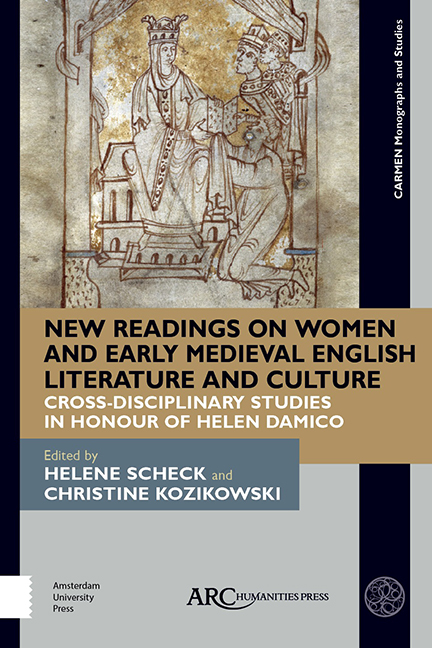 New Readings on Women and Early Medieval English Literature and Culture
New Readings on Women and Early Medieval English Literature and Culture Book contents
- Frontmatter
- Contents
- List of Illustrations
- List of Abbreviations
- Note from the Editors
- Introduction: Feminism and Early English Studies Now
- PART ONE LITERACY AND MATERIAL CULTURE
- PART TWO ENGENDERING MARRIAGE AND FAMILY
- PART THREE WOMEN OF THE BEOWULF MANUSCRIPT
- PART FOUR WOMEN AND ANGLO-SAXON STUDIES
- Select Bibliography
- Index of Manuscripts
- General Index
8 - Playing with Memories: Emma of Normandy, Cnut, and the Spectacle of Ælfheah’s Corpus
Published online by Cambridge University Press: 20 November 2020
- Frontmatter
- Contents
- List of Illustrations
- List of Abbreviations
- Note from the Editors
- Introduction: Feminism and Early English Studies Now
- PART ONE LITERACY AND MATERIAL CULTURE
- PART TWO ENGENDERING MARRIAGE AND FAMILY
- PART THREE WOMEN OF THE BEOWULF MANUSCRIPT
- PART FOUR WOMEN AND ANGLO-SAXON STUDIES
- Select Bibliography
- Index of Manuscripts
- General Index
Summary
ENGLAND WITNESSED ITS fair share of atrocities during the Second Viking Age, notably including both the mass slaughter of Danish settlers during the St. Brice's Day Massacre of 1002 and the 1014 mutilation of Anglo-Saxon hostages on the beaches of Sandwich by Cnut and his men. The milieu created by this extended period of invasion was one defined by betrayal, broken promises, and brutality. It is within this context that one of the most notorious atrocities of the entire Anglo-Saxon period can be found: the murder of Ælfheah, archbishop of Canterbury, in 1012. In recording these events, various texts of the Anglo-Saxon Chronicle describe how the Danish army had captured Ælfheah in September of 1011 through the betrayal of Ælmær, an Anglo-Saxon who had once been saved by the archbishop. The Danes then brought the leader of the Anglo-Saxon church as a prisoner to Greenwich in southeast London. Angered by his unremitting refusal to ask for any ransom on his behalf, they quickly became drunk and on Sunday of the Easter Octave (19 April), “bysmorlice acwylmdon, oftorfedon mid banum ond mid hryþera heafdum” (shamefully murdered [him], [and] stoned him with bones and heads of cattle). The gruesome scene continued until a certain Dane finally took pity upon him, dispatching the archbishop with a single axe blow to the skull. Rather than effectively “hiding the evidence,” which is perhaps what should have been expected, since Ælfheah could have easily served as the symbol of defiance around which Anglo-Saxons might rally, his body was transferred into London the very next day for a proper burial at St. Paul's Cathedral, which is where it would remain for the next eleven years.
It is not until 1023 that the narrative of this murdered archbishop picks up again, when his story takes an unexpected turn. At this point, the Danish Cnut had been on the Anglo-Saxon throne for seven years and was now married to Emma, the Norman widow of the Anglo-Saxon king whom he had defeated. The memory of his compatriots’ brutal murder of the recently sainted Ælfheah would certainly still have been fresh in peoples’ minds; nonetheless, it was in this year that Cnut, Emma, and their son, Harthacanute, led a great procession translating the saint's body from St.
- Type
- Chapter
- Information
- New Readings on Women and Early Medieval English Literature and CultureCross-Disciplinary Studies in Honour of Helen Damico, pp. 141 - 158Publisher: Amsterdam University PressPrint publication year: 2019


